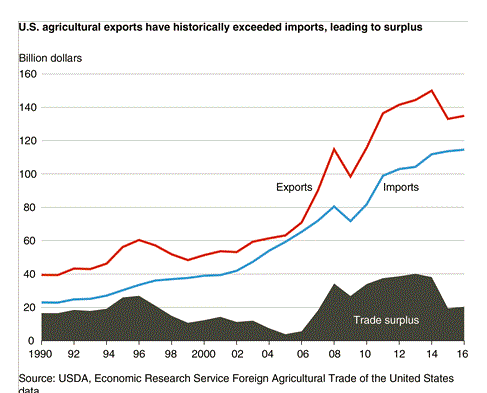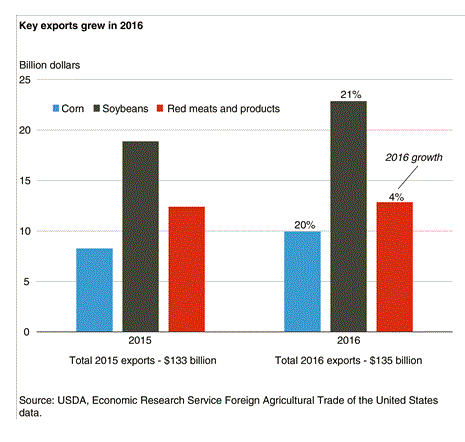Food Navigator’s special edition on “clean” labels
This is one of Food Navigator’s collection of articles, videos, and podcasts on single topics, in this case “clean” labels, clearly a hot trend.
Special Edition: Where next for clean label?
How is the ‘clean-label’ trend evolving? Is it still about avoiding certain ‘artificial’ or ‘artificial-sounding’ ingredients, or is it now part of a broader conversation about GMOs, animal welfare, sustainability, and business ethics? What do consumers understand by ‘clean’ food? And how will they view innovations from monk fruit produced from microbes, to ‘meat’ and ‘milk’ made without raising animals?
To the casual observer, ‘cleaning up’ our food sounds like an eminently sensible thing to do. But where is the clean label trend going, and is ditching every ingredient you can’t pronounce really the key to fixing the ‘broken’ food system (as Panera implies in a recent ad) or improving the health of people and the planet? .. Read
- CLEAN LABEL 2.0: Natural flavors and preservatives, pesticide residues, and Non-GMO in the spotlight: Think ‘clean label’ just means ditching ‘artificial’ ingredients and avoiding anything attracting negative press (warranted or otherwise)? Think again. Today, brands are also questioning whether ‘natural’ flavors, preservatives and sweeteners are really ‘clean,’ whether Non-GMO claims should only apply to what’s in the final product, and whether pesticide residues – even at trace levels – belong in ‘natural’ or ‘clean label’ foods. So where will this all lead?.. Read
- Clean label: What works, what doesn’t, where is it headed, and what are the legal vulnerabilities?: The clean label movement may have started as industry’s response to consumers who wanted foods and beverages made without artificial or “chemical” sounding ingredients, but overtime as brands continued to one-up each other, the concept morphed and metastasized to represent so much more… Read
- SmartLabel gains traction as a tool for brands to meet consumers’ mounting clean label demands: While SmartLabel is still in its relative infancy, manufacturers are flocking to the technology to help them provide the in-depth information that today’s consumers want as part of the clean label movement, but which might not fit on product packaging… Watch now
- Arctic Zero’s new social media video campaign shows how ‘clean label’ is more than just ‘free-from’: With the launch of four new varieties, Arctic Zero produced a video to tell consumers the story of how the ingredients were sourced… Watch now
- Soup-To-Nuts Podcast: Clean label 2.0 and other top marketing strategies for natural products: When it comes to marketing products in the natural channel it seems like there are as many strategies as there are products; but just like how not all products resonate with all consumers, not all marketing strategies do either. .. Listen now
- BioChecked founder: ‘We knew non glyphosate certification was going to be something people look for’: After observing trade shows, lab test requests, and online forums on food and health, BioChecked executive director Scott Prentice and his team thought the timing was right to launch a ‘non glyphosate’ certification… Read
- Campbell Soup backs ‘potassium salt’ petition: A more consumer-friendly name will ‘advance public health goals’: Campbell Soup has joined a growing number of food manufacturers backing a citizen’s petition from NuTek Food Science asking the FDA to allow ‘potassium salt’ as an alternate name for potassium chloride on food labels… Read
- Spindrift CEO: ‘We have all the makings of a brand that can be disruptive’: Multinationals are investing in – or snapping up – smaller, more entrepreneurial brands in the natural and organic food and beverage space faster than you can say ‘because that’s where the growth is’. So will Spindrift – which is on a mission to disrupt the sparkling water category – be next on Big Food’s shopping list?.. Read
- Propylene glycol in the spotlight as Hint Water is targeted in ‘all-natural’ lawsuit with a new twist: Propylene glycol (PG) is an FDA-approved synthetic substance widely used as a solvent in ‘natural flavors’- which are clearly defined in law. But would consumers expect to find it in a product marketed as ‘all-natural’ – a term that doesn’t have a clear legal definition? Not according to a class action lawsuit filed against Hint Inc this week… Read
- Consumer interpretation of clean label trend varies by generation: As the concept of clean label continues to evolve and transition from an industry term to one consumers understand and seek, companies should take a more sophisticated approach to the trend by accounting for how different generations prioritize and interpret it, suggests research from C&R Research. .. Read
- Clean label reformulations can buffer frozen food sales’ slow but steady decline: A slow decline is forecasted for total frozen food sales, which includes frozen dinners/entrees, pizzas, side dishes, and appetizers/snacks, according to Packaged Facts’ latest numbers… Read
- In the age of clean label, are consumers in developed markets losing interest in fortified foods? With clean label now “the most dominant trend in food and drink,” many food and beverage manufacturers are moving away from fortifying foods with minerals, vitamins and other nutritious ingredients, says Euromonitor International… Read
- Clean label trend opens up new application opportunities for citrus fiber: The quest to rid product labels of phosphates, carrageenan, titanium dioxide, mono- and di-glycerides and other substances gracing food marketers’ ‘unacceptable ingredients’ lists has created new growth opportunities for Fiberstar’s citrus fibers, which are sourced from byproducts of the juicing industry… Read





